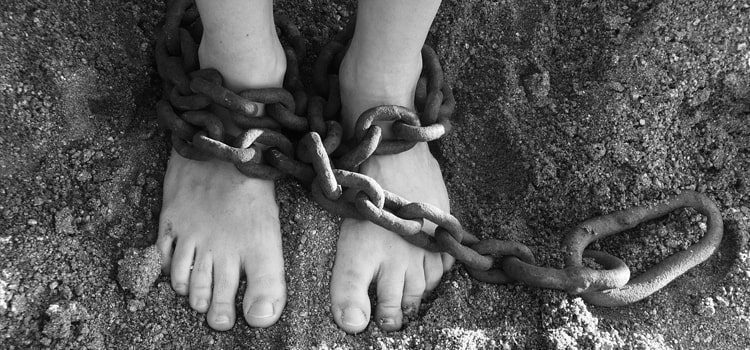Types of punishments under the Indian penal code, 1860 (sections 53 to 75)
Posted On : October 11, 2021

Table of Contents
Introduction
The stage of punishment is the final process of the criminal jurisprudence system. The well-known fundamental tenet of the criminal law is that a person is considered innocent until proven guilty. The nature of proof requires that the evidence before the court must prove beyond reasonable doubt the guilt of the person who has been accused of the various offences.
Principle for sentencing – In every criminal case, two aspects have to be borne in mind – the heinousness or enormity of the crime and based on the circumstance under which the accused has committed the crime. Concerning maximum imprisonment, the same can be awarded only with the discretion of the judge who will consider the totality of the circumstances before imposing the punishments which should be appropriate and just. Motives as well will play a vital role in determining the sentence.
The following are the theories of Punishment, these have evolved over time
- Deterrent theory - The act that takes away the power of committing injury is called incapacitation, is in the form of remedy operated by the fear should be the main object of the punishment which is called deterrent theory
- Preventive theory - Even utilitarian’s like Bentham advocated the preventive remedies which tend to prevent offences.
- Retributive theory - Retributive theory is based on rights, desert and justice. The guilty deserve to be punished, and therefore there must be no moral consideration relevant to punishment which outweighs the offender’s criminal desert is the philosophy of retributive theory.
- Reformative theory - The object of punishment has been considerably under the process of changes from the last centuries because of the Welfare State concept. In Criminal Law we must reduce the brutalities of punishment is today’s philosophy of law
The following are the types of punishments under the Indian penal code provided under sections 53-60
- Death
- Imprisonment for life
- It has been repealed by act 17 of 1949
- Imprisonment with two descriptions – Rigorous (Hard labour), Simple Labour
- Forfeiture of property
- Fine
Let us understand in detail the type of punishments imposed by the courts on the accused for the crime they have committed under IPC.
- Death Sentence
- The death sentence is the harshest form of punishment under the Indian Penal Code, it involves judicial killing or taking the life of the accused as a form of punishment.
- Capital punishment is provided for the following offences - a) Treason as in waging, attempting or abetting war against the government of India (section 121), b) criminal conspiracy to commit an offence punishable by death (section 132), c) Abetment of mutiny committed (section 132), d) Perjury resulting in the conviction and death of an innocent person (section 195A) e) threatening or inducing any person to give false evidence. F) murder, g) abetment of suicide by a minor or an insane person or intoxicated person h) attempted murder by a life convict I) kidnapping for ransom j) causing death or resulting in a vegetative state of a rape victim k) committing rape on a girl under the age of 12 L) committing gang rape on a girl under 12 years M) repeat offenders N) Dacoity accompanied with murder.
- The constitutional validity of Sec 303: Rajendra Prasad v State of Uttar Pradesh - when the supreme court concludes that the accused is guilty of murder then the state through the prosecutor should be called upon court and state whether the extreme penalty is called for.
- Under Sec 354(3) CrPC: The court has to give a special reason to explain why it came to this conclusion. This provision was introduced in the year 1973 which was in contrast to the earlier provision which made the death penalty the rule.
- Sec 366 CrPC: Once the sessions Court award the death penalty, the Court has to submit the same to the HC for confirmation. The second level of review of the evidence is made.
- Cases where the death penalty was confirmed – state of Tamil Nadu v Nalini - 26 persons accused of being involved in the conspiracy to assassinate the former prime minister of India, Rajiv Gandhi. In Jai Kumar v state of Madhya Pradesh - Jai Kumar was sentenced to death for killing his sister-in-law who was pregnant and her eight-year-old daughter because she did not give him enough food.
- Case laws where the death sentence was commuted to life imprisonment – Om Prakash v state of Haryana - where an army man killed seven members of a rival family. Kishori v state of Delhi - large scale death of Sikhs due to the assassination of then prime minister Indira Gandhi by two Sikh men.
- Lehna v. State of Haryana : when the collective consciousness of the community is so shocked that it would expect the holders of judicial power to impose the death penalty.
- Bachan Singh v. the State of Punjab (Constitutional Bench) The Bench held that: A real and abiding concern for the dignity of human life postulates resistance to taking a life through law’s instrumentality. That ought not to be done in the rarest of rare cases when the alternative option is unquestionably foreclosed. ‘Rarest of rare’ principle hence evolved in this case.
- Imprisonment for life
- Section 53 secondly talks about imprisonment for life which means the sentence of imprisonment running throughout the remaining period of a convict’s natural life unless it's commuted or remitted by the competent authorities.
- In Gopal Vinayak vs the state of Maharashtra, as regards the nature of imprisonment it has been held to be rigorous imprisonment and not simple imprisonment. This was held in KM Nanavati vs the State of Maharashtra and also in Naib Singh vs the State of Punjab in which the court held that imprisonment for life meant rigorous.
- The accused awarded life imprisonment, therefore, has to be retained in jail for the rest of his life. Even a state act equates life imprisonment with imprisonment for 20 years a convict does not entitle to an automatic release on expiry of the term of imprisonment including remission.
- The view reiterated in State of Madhya Pradesh vs. Ratan Singh, The supreme court held that it was the direction of the government to choose to exercise its discretion to remit either the whole or a part of the sentence under section 401(equivalent to section 432 of the present Cr.P.C.
- It has been repleaded by the law
- Imprisonment with two descriptions – Rigorous (Hard labour), Simple Labor
- When it comes to rigorous imprisonment, unlike the simple version the prisoners are put to hard labour such as grinding corn, digging the earth, drawing water, construction of roads and dams, cutting the firewood, bowing wool etc.
- However, in the Simpler version, the prisoner is merely confined in jail and is not put to any kind of work.
- Some offences are made punishable by both rigorous and simple imprisonment under the Indian penal code. Only a trial court has the jurisdiction to award the form of punishment for the convict. Some sentences can be wholly or partly rigorous or simple.
- Minimum wages for prisoners – the state of Gujarat vs. Honorable high court of Gujarat when there is rigorous imprisonment is accompanied with hard labour, these prisoners are entitled to wages for the work done by them as it is a matter of right which have to be paid as it would strengthen the dignity of convicts and penal jurisprudence.
- Forfeiture of Property –
- The punishment of forfeiture of property is ancient, section 53 fifthly deals with forfeiture of property as a form of punishment. This principle has been ceased to be a punishment except in three types of offences
- 1st In cases where the offender commits depredation or make preparations for committing depredations against the government of India will be punished with forfeiture of the property mentioned under section 126.
- 2nd receiving any property taken in the commission of war or depredation is punished with forfeiture of property which is elaborated under section 127.
- 3rd if any public servant unlawfully buying or purchasing property in his name or another’s name is punished with the same elaborated under section 169.
- In Shoba Suresh Jumani v appellate tribunal – the supreme court held that section 61 and 62 which was repealed in 1921 is required to be re-introduced in the law for having the deterrent effect on those who are bent upon to accumulate wealth at the cost of society misusing their power or post.
- Fine
- Fine is a forfeiture of money by way of penalty, in sections 137,155,171-177,278,283,294,154,157 of the Indian penal code are offences that carry fine as the sole punishment. Some offences fines are imposed as an alternative punishment. Some offences fines are imposed as an additional punishment.
- Concerning the amount of fine, it will be imposed individually and not collectively. The amount of fine should not come unduly harsh.
- In Philip Bhimsent Anid v. state of Maharashtra, The accused has been convicted and sentenced to life imprisonment and was also ordered to pay a fine and as since the offender was only 19 years old and a house servant, he was unable to pay the fine, the court, therefore, reduced the fine amount.
- There is certain imprisonment that is imposed due to default in payment of the fine, when the same is paid the imprisonment will be terminated.
- Shahejadkhan Mahebubkhan Pathan v state of Gujarat Where a substantial term of imprisonment is inflicted an excessive fine should not be imposed except in exceptional cases. Shantilal v state of Madhya Pradesh -The court held that the amount of fine should not be harsh or excessive.























